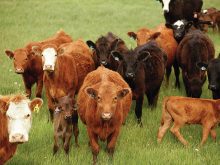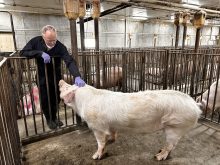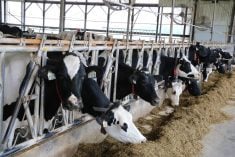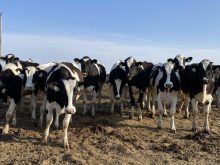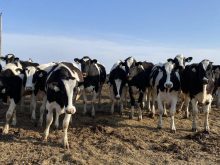It is tempting to dismiss a little extra fat on a horse as nothing to worry about. Many horses and ponies these days are overweight.
The same holds true for cats and dogs. It is my experience that animals of normal weight have become so infrequent that many people worry the animals are too thin. Our society has become so accustomed to overweight animals that obesity is the new normal.
However, excess fat is harmful. Plump ponies and roly-poly horses are prone to serious health issues.
Read Also

Beef check-off collection system aligns across the country
A single and aligned check-off collection system based on where producers live makes the system equal said Chad Ross, Saskatchewan Cattle Association chair.
Unlike the workhorses of the past, modern horses are typically not required to put in consistent, heavy work. Confined to box stalls and small paddocks, the lifestyle of many pleasure horses mimics that of people. Both consume high-energy diets that far exceed nutritional requirements.
Restricting them to stalls or small paddocks is like plunking them in front of the television for the night. The burst of activity that comes with an intensive workout does not fully combat the problems that arise when individuals are otherwise sedentary.
Another contributing factor is nutrition. Modern pastures have been optimized to achieve weight gain in grazing cattle and sheep. But nature designed horses to spend most of their time grazing low-quality grasses. The hay and grain diets we feed the modern horse are the equine equivalent of a burger and fries.
Then there is the issue of equating food with love. Feeding a hot bran mash or bucket of grain because the horse likes it, even though it doesn’t need it from a nutritional standpoint, is likely to add excess weight.
Trainers who use positive reinforcement techniques involving food rewards consider treats in the context of the horse’s nutritional requirements.
Obvious problems associated with excess fat include poor performance and reduced endurance.
Obesity is also associated with reproductive issues. Obese mares may have abnormal cycles and trouble delivering foals. There is also evidence to suggest that overweight mares give birth to larger foals, which may compound birthing troubles.
One of the most serious effects of horse obesity is abnormal insulin metabolism, which can lead to future health conditions.
The most notorious condition associated with obesity and insulin dysregulation is laminitis (also called founder). When all three conditions occur in the same horse, it is called equine metabolic syndrome. In addition to founder, affected horses develop abnormal fat deposits on the neck, creating a “cresty neck.” Laminitis is difficult to manage and can lead to euthanasia.
Overweight horses are prone to developing benign fat tumours (called lipomas) in the tissue that supports the intestines. If these lipomas are suspended on a long stalk, they can wrap around portions of the gut, leading to severe colic that requires surgery.
Given the heath concerns, it is important for owners to recognize when their animals are overweight.
Scales, although not always available, provide an accurate assessment of body condition.
Weight tapes are useful to estimate weight.
Another popular approach is body condition scoring, which uses an objective scale to assess body fat deposits along the neck, withers, ribs, back and tail head. There are excellent charts available online that can help you evaluate where your horses are on this scale.
Achieving optimum weight and body condition will require an honest look at your horse’s nutritional requirements and activity level. Decreasing high energy feeds, providing lower energy hay and increasing exercise will help with weight loss.
The unnecessary feed and the cost to treat these serous health conditions make obesity an expensive situation.
And because what we feed horses is under our control, management strategies to reduce obesity are also attainable goals.
Dr. Jamie Rothenburger is a veterinarian who practices pathology and a PhD student at the Ontario Veterinary College. Twitter: @JRothenburger





